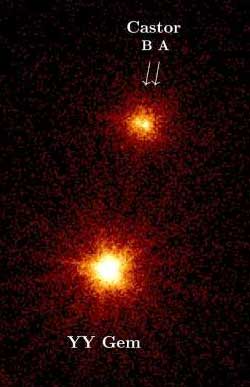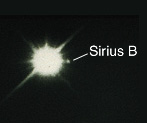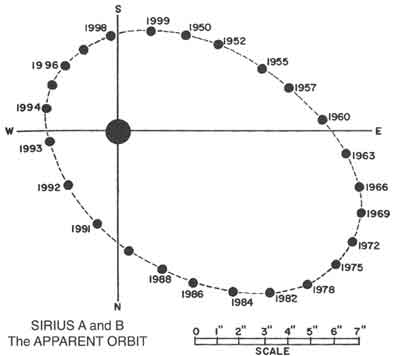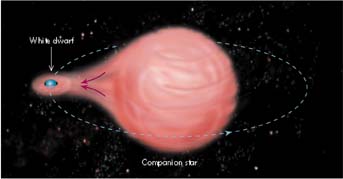|
 Visual Binaries Visual Binaries
- How to spot them: Both stars
are visible, often bright and separated.
- Examples: Polaris (actually a triple);
Mizar in the Big Dipper (and close to Alcor); Castor in Gemini; Albireo
in Cygnus, the head of the swan (two colors, perhaps the finest
binary for a small telescope); Sirius (Sirius B is a white dwarf, and it had been predicted!);
[Mira (its companion is a cool white dwarf surrounded by a hot
blue accretion disk)].
- Remarkable cases: Epsilon Lyrae,
near Vega, is a double double!
Spectroscopic Binaries
- How to spot them: From the Doppler
shifts in their spectrum; lines from one or both stars may be
seen to move back and forth.
- Examples: Again Mizar (each
of the two visible stars!), and Castor.
Eclipsing Binaries
- How to spot them: From the changing
amount of light we receive when one passes in front of the other.
- Examples: Algol in Perseus (every
3 days becomes 3 times dimmer for a few hours); [Delta
Velorum, a quadruple star system, whose brightest member is an
eclipsing binary; Theta-1 Orionis in the Trapezium].
Astrometric Binaries
- How to spot them: We only see
one star, but it wobbles due to the presence of the other one.
|




![]()